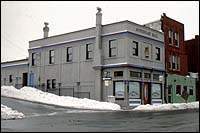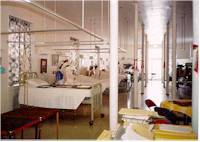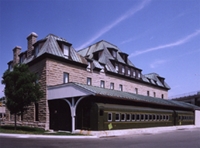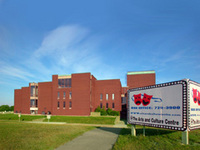By the early 1500’s, there were already the ships of three European nations anchored in St. John’s harbour. Conflicts persisted for centuries until the British, at the Battle of Signal Hill, solidified jurisdiction in 1762. It served as a naval base during the American Revolutionary War and the War of 1812.
St John’s is second largest city in Atlantic Canada (100,000, with 180,000 in the metropolitan area), the most easterly city in North America and the eastern terminus of the Trans-Canada Highway. It is the oldest English-founded settlement in North America and the capital city of Newfoundland (pronounced Newfnland) and Labrador.
St John\'s is the cloudiest, snowiest, and windiest city in Canada – not a great recommendation – but it is also has the third mildest winter of any Canadian city and numerous reasons to visit. Historically made prosperous by proximity to the greatest fishery the world has ever known, the Grand Banks, its economy now continues to expand through tourism, oil and gas exploration, and housing construction.
Visitors will find brightly painted houses, steep curious streets, reminiscent of San Francisco, harbour views and significant stoneworks, including a large Catholic cathedral and a basilica. It is architecturally interesting and pleasing for exploration on foot, or through an excellent bus system. The city is home to The Provincial Museum of Newfoundland and Labrador, which is listed on the Canadian Register of Historic Places, the
Railway Coastal Museum and a geological interpretation centre, located on Signal Hill.
There are hundreds of diverse restaurants to explore. In the downtown, Water Street is believed to have the most pubs and bars per square foot of any street in North America. For nightlife fans, bars in St. John’s are known for staying open later than anywhere else in Canada. It is a vibrant city, with an annual Mardi Gras, and George Street Festival. The city can be lively any night of the week.
St John’s is blessed by one of the largest urban parks in Canada, Pippy Park, whose 3400 acres includes walking and skiing trails, two golf courses and protected wildlife habitat. Newfoundland and Labrador Folk Festival and St. John\'s Peace-a-chord are held in Bannerman Park, a Victorian style park established in 1891. Royal St. John\'s Regatta, the oldest annual sporting event in North America, is held on the first fair weather weekend in August, and is one of the few weather-dependent holidays in the world.
On Signal Hill, a Canadian National Historic Site, Cabot Tower was built in 1897 to commemorate the 400th anniversary of John Cabot’s discovery of St. John’s, as well as Queen Victoria’s Diamond Jubilee. It was on signal hill that Guillermo Marconi received the first transatlantic wireless transmission on December 12, 1901. St. John\'s was the starting point for the world’s first non-stop transatlantic flight.

If you have an interest in healthcare from days-gone-by, make time to put this place on your travel itinerary.

A public craft gallery located in historic Devon House. Exhibitions features contemporary and traditional fine craft while encouraging innovation, excellence...

The only combined hospital medical nursing archives/museum in Canada.

Eastern Edge is an artist-run contemporary gallery in downtown St. John's. Call for the exhibit schedule.

Immerse yourself in our culture at Newfoundland and Labrador's largest public cultural space.

Whether you are visiting as a family or as part of a group, the Railway Coastal Museum allows you to...

Resource Centre for the Arts is a thirty year old artist-run organization dedicated to the development, promotion and presentation of...

Houses a 1,000 seat theatre, a 76 seat theatre, three storey art gallery and library.